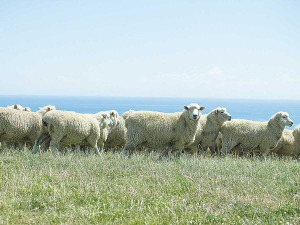BNZ: $10 milk price now unlikely for 2025/26 season
The chance of a $10-plus milk price for this season appears to be depleting.
 BNZ’s 2020/21 season average lamb price forecast of $6.60/kg sits close to the past five-year average.
BNZ’s 2020/21 season average lamb price forecast of $6.60/kg sits close to the past five-year average.
While lamb prices are starting the new season at around 16% below last year’s levels, they are not outright weak, according to the BNZ.
In its latest Rural Wrap newsletter, BNZ senior economist Doug Steel says the current price of $7/kg is sitting close to the 5-year average for this time of year.
“We’d argue this is a very credible performance, given the circumstances,” Steel says. “This expected lower average for the new season – compared to the season just finished – largely reflects a lower starting point rather than necessarily further weakness from here.”
He says while there are many factors to consider, BNZ remains generally cautious about demand. However, Steel believes the supply side of the equation has the potential to offer some price support.
BNZ says Covid-19 continues to dominate things, with European case numbers tracking higher.
“This is cause for concern, as some new restrictions are imposed.
“While many restaurants are open, the uncertainty alone has been unhelpful for forward orders – including for the lucrative Christmas chilled trade.”
Meanwhile, the bank adds that the ongoing the UK-EU trade negotiations are also adding to insecurity.
“Uncertainty remains as the end of year Brexit deadline looms,” it says. “The base case is that some sort of deal will be cobbled together before the end of this year but, as with all things Brexit, there are no guarantees. The coming weeks will be crucial.”
However, BNZ says more encouraging signs of recovery are coming out of China.
“This provides a better backdrop for lamb demand ahead, with Chinese purchasing power further supported by a gradually appreciating yuan,” Steel explains.
“African Swine Fever (ASF) remains an important consideration for lamb demand. Ongoing disruption to pork supplies is supporting demand for alternative meats, including lamb.”
Steel says, overall, the outlook for lamb demand has a fair spread of positives and negatives in the mix.
“That alone is reason enough to be cautious,” he says. “But even if demand softens a bit that does not necessarily mean prices will fall further, with the supply side generally looking price supportive for the season ahead.”
The BNZ is also anticipating that tighter NZ supply will provide some support to prices over the season.
“We await the industry’s first estimate for the new season’s national lamb crop, usually available in November, with interest.”
Steel says the BNZ’s 2020/21 season average lamb price forecast of $6.60/kg sits close to the past five-year average.
“Given the serious challenges that the world currently faces, this would be a respectable outcome.”
Nearly three years on from Cyclone Gabrielle, Hawke's Bay apple orchardist Paul Paynter says they are still doing remedial work around their orchards and facing financial challenges.
An unusual participant at the recent Royal A&P Show in Christchurch was a stand promoting a variety of European products, during an event that normally champions the homegrown.
Bradley Wadsworth lives on the family farm – Omega Station – in the Wairarapa about 30 minutes’ drive east from Masterton.
With global milk prices falling, the question is when will key exporting countries reach a tipping point where production starts to dip.
Rural contractors want the Government to include a national standard for air plans as part of its Resource Management Act reforms.
The biggest reform of local government in more than 35 years is underway.